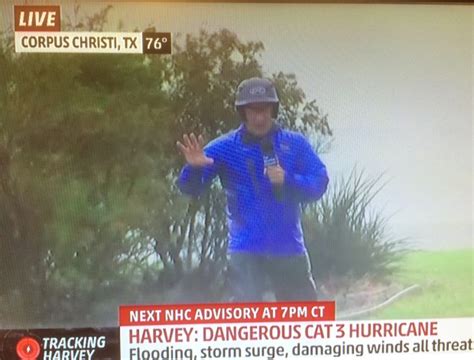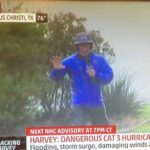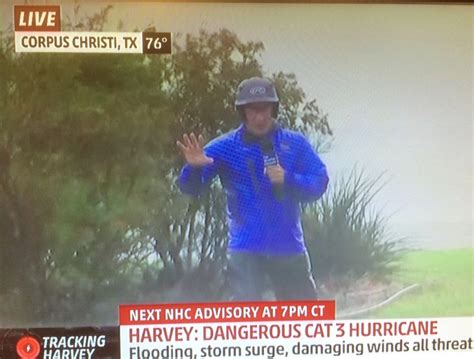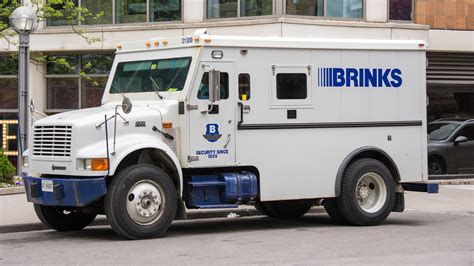
A unique and potentially impactful weather system is brewing, prompting veteran meteorologist Jim Cantore to caution about a “different” kind of storm poised to affect the United States. Unlike typical winter storms, this system exhibits characteristics that could lead to a variety of hazardous conditions across a wide geographical area.
Jim Cantore, the Weather Channel’s renowned meteorologist, has issued a warning regarding an unusual storm system heading towards the United States, emphasizing its distinct nature compared to typical winter weather events. Cantore highlighted that this storm’s complexity and potential impacts could create significant challenges for affected regions. “This is a different storm,” Cantore stated, suggesting that traditional preparedness measures might not suffice given the anticipated multifaceted hazards.
The impending storm is expected to bring a complex mix of weather phenomena, including heavy snow, ice, torrential rain, and strong winds. This combination of factors could lead to widespread travel disruptions, power outages, and potentially dangerous conditions for residents in the affected areas. Meteorologists are closely monitoring the storm’s development and trajectory to provide timely and accurate forecasts to the public.
Forecast Details and Potential Impacts
The National Weather Service (NWS) and other meteorological agencies are actively tracking the storm, anticipating its arrival in the coming days. The specific timing and intensity of the storm’s impacts will vary depending on the region, but preliminary forecasts suggest that a large portion of the country could experience some form of adverse weather.
-
Snowfall: Heavy snow is expected in several northern and mountainous regions. Accumulations could reach significant levels, making travel treacherous and potentially causing structural damage due to the weight of the snow.
-
Ice: A significant threat of ice accumulation is present in areas where temperatures hover around freezing. Even a thin layer of ice can make roads and walkways extremely slippery, leading to accidents and injuries. Ice storms can also cause widespread power outages as ice-laden tree branches fall onto power lines.
-
Rain: Torrential rain is forecast for regions along the storm’s southern track. This could lead to flash flooding, particularly in urban areas and low-lying regions with poor drainage systems.
-
Wind: Strong winds are anticipated across a broad area, potentially exacerbating the impacts of snow, ice, and rain. High winds can down trees and power lines, contributing to power outages and property damage.
Geographical Areas at Risk
While the exact path of the storm remains somewhat uncertain, initial forecasts indicate that a large swathe of the United States could be affected. Regions from the Midwest to the Northeast, and potentially extending into parts of the South, are bracing for the storm’s arrival. Residents in these areas are urged to stay informed about the latest weather updates and heed any warnings or advisories issued by local authorities.
Preparedness Measures
Given the potential for severe weather, it is crucial for individuals and communities to take appropriate preparedness measures. These include:
- Stay Informed: Monitor weather forecasts from reliable sources such as the National Weather Service, local news outlets, and weather apps.
- Emergency Kit: Assemble an emergency kit containing essential supplies such as food, water, medications, flashlights, batteries, and a first-aid kit.
- Travel Plans: If possible, avoid traveling during the storm. If travel is necessary, check road conditions and ensure your vehicle is properly equipped for winter weather.
- Home Safety: Take steps to protect your home from damage, such as clearing gutters, trimming tree branches, and insulating pipes.
- Power Outages: Prepare for potential power outages by having a backup power source, such as a generator, and knowing how to operate it safely.
- Community Support: Check on elderly neighbors or those with disabilities who may need assistance.
Expert Analysis and Commentary
Meteorologists emphasize the importance of understanding the nuances of this particular storm system. The combination of different weather hazards can create complex challenges for forecasting and response efforts. “The convergence of snow, ice, rain, and wind makes this a particularly difficult storm to predict,” noted one weather expert. “Small changes in temperature or storm track can have significant impacts on the type and severity of the weather experienced in different areas.”
Jim Cantore’s warning underscores the potential for this storm to deviate from typical winter weather patterns. His experience and expertise lend credibility to the concerns being raised by weather professionals. “Cantore’s emphasis on the storm being ‘different’ is a signal that people should pay close attention and not underestimate the potential impacts,” commented a fellow meteorologist.
Historical Context
While every storm is unique, it is helpful to consider past weather events that have brought similar combinations of hazards. The “Ice Storm of 1998,” which devastated parts of New England and eastern Canada, serves as a stark reminder of the destructive potential of ice accumulation. Similarly, blizzards in the Midwest have demonstrated the crippling effects of heavy snow and strong winds. By studying these past events, meteorologists and emergency responders can better prepare for and mitigate the impacts of future storms.
Long-Term Implications
The increasing frequency and intensity of extreme weather events are raising concerns about the long-term impacts of climate change. While it is difficult to attribute any single storm directly to climate change, scientists note that warmer temperatures can lead to more moisture in the atmosphere, potentially fueling heavier precipitation events. Changes in atmospheric circulation patterns can also alter storm tracks and intensities. Understanding these long-term trends is crucial for developing effective strategies to adapt to a changing climate.
Community Preparedness and Response
Effective community preparedness and response efforts are essential for minimizing the impacts of severe weather. Local governments and emergency management agencies play a critical role in providing timely information, coordinating resources, and assisting those in need. Residents can contribute to these efforts by staying informed, following safety guidelines, and helping their neighbors.
Economic Impacts
Severe weather events can have significant economic impacts, ranging from disruptions to businesses and transportation to damage to infrastructure and property. The costs associated with cleanup and recovery can be substantial, particularly in areas that experience widespread damage. Preparedness measures, such as investing in resilient infrastructure and developing effective emergency response plans, can help to mitigate these economic impacts.
The Role of Technology
Advances in weather forecasting technology have greatly improved our ability to predict and track severe weather events. Satellite imagery, radar systems, and computer models provide meteorologists with valuable data that can be used to issue timely and accurate warnings. Social media and mobile apps also play an important role in disseminating information to the public. However, it is important to rely on credible sources of information and to be aware of the potential for misinformation.
Mental Health Considerations
Severe weather events can have a significant impact on mental health. The stress and anxiety associated with preparing for a storm, the fear of potential damage or injury, and the disruption to daily life can all take a toll. It is important to prioritize mental health during these times and to seek support if needed. Talking to friends and family, practicing relaxation techniques, and engaging in self-care activities can all be helpful.
Animal Safety
Don’t forget about your furry friends! Ensure pets have adequate shelter and access to food and water. If possible, bring pets indoors during severe weather. Keep pets leashed when outdoors after the storm, as familiar surroundings may be altered, and they could become disoriented.
Specific Regional Concerns
-
Northeast: The potential for heavy snow and ice accumulation poses a significant threat to the Northeast. Power outages and travel disruptions are major concerns. Residents should be prepared for extended periods without electricity and should stock up on essential supplies.
-
Midwest: Heavy snow and strong winds could create blizzard conditions in the Midwest. Travel could become impossible, and residents should be prepared to shelter in place. Livestock owners should take steps to protect their animals from the cold.
-
South: The threat of torrential rain and flash flooding is a primary concern in the South. Residents should be aware of flood risks and should avoid driving through flooded areas.
-
Mountainous Regions: Heavy snow and strong winds could create dangerous avalanche conditions in mountainous regions. Backcountry travelers should be aware of avalanche risks and should take appropriate precautions.
The Science Behind the Storm
The development of this unusual storm system is influenced by a complex interplay of atmospheric factors. These include:
-
Jet Stream: The position and strength of the jet stream, a high-altitude wind current, can steer storms across the country.
-
Temperature Gradients: Sharp differences in temperature can create instability in the atmosphere, leading to the development of storms.
-
Moisture Availability: The availability of moisture in the atmosphere is crucial for fueling precipitation.
-
Upper-Level Disturbances: Upper-level disturbances, such as troughs of low pressure, can trigger the development of storms.
Community Resilience
Building community resilience is essential for mitigating the impacts of severe weather. This involves:
-
Investing in Infrastructure: Upgrading infrastructure, such as roads, bridges, and power grids, can make communities more resilient to severe weather.
-
Developing Emergency Plans: Creating comprehensive emergency plans that address a variety of potential hazards can improve community preparedness.
-
Promoting Public Awareness: Educating the public about severe weather risks and preparedness measures can empower individuals to take action.
-
Fostering Collaboration: Encouraging collaboration between government agencies, community organizations, and the private sector can strengthen community response efforts.
Lessons Learned
Every severe weather event provides valuable lessons that can be used to improve preparedness and response efforts in the future. By studying past events, identifying areas for improvement, and implementing changes, communities can become better equipped to face future challenges.
Looking Ahead
As the storm approaches, meteorologists will continue to monitor its development and provide updated forecasts. Residents in the affected areas should stay informed and heed any warnings or advisories issued by local authorities. By taking appropriate preparedness measures, individuals and communities can minimize the impacts of this unusual storm and stay safe.
The intensity and uniqueness of this storm require not just awareness but proactive engagement from the public. Understanding its complexities and being ready to respond are crucial steps in mitigating potential damage and ensuring safety.
Ongoing Updates and Resources
Throughout the duration of the storm, it’s important to remain connected to reliable sources of information. The National Weather Service (NWS) website (weather.gov) offers real-time updates, watches, and warnings. Local news channels and radio stations are also valuable resources for immediate and community-specific information. Additionally, sign up for alerts from your local emergency management agency to receive critical updates directly to your phone.
This storm serves as a powerful reminder of the need to respect the forces of nature and the importance of being prepared for any eventuality. By staying informed, taking precautions, and working together, we can weather this “different” storm and emerge stronger as a community.
Conclusion
As the “different” storm advances, vigilance, preparedness, and community collaboration are key. By staying informed and proactive, individuals and communities can navigate the challenges and minimize the impact of this unique weather event. Remember that your safety and the well-being of those around you are the top priorities during this period.
Frequently Asked Questions (FAQ)
1. What makes this storm “different” from typical winter storms?
This storm is characterized by its combination of multiple weather hazards, including heavy snow, ice, torrential rain, and strong winds. This combination makes it more complex and potentially more impactful than a typical winter storm that primarily involves snow. The varying conditions across different regions also add to the complexity of forecasting and preparedness. “This is a different storm,” as Jim Cantore emphasized, requiring a more nuanced approach to safety and preparation.
2. Which areas are most likely to be affected by the storm?
The storm is expected to impact a wide geographical area, stretching from the Midwest to the Northeast, and potentially extending into parts of the South. Specific regions at risk include:
- Northeast: Potential for heavy snow and ice accumulation, leading to power outages and travel disruptions.
- Midwest: Blizzard conditions with heavy snow and strong winds, making travel impossible.
- South: Threat of torrential rain and flash flooding, particularly in low-lying areas.
- Mountainous Regions: Dangerous avalanche conditions due to heavy snow and strong winds.
3. What are the most important steps I can take to prepare for the storm?
Key preparedness measures include:
- Staying Informed: Monitor weather forecasts from reliable sources.
- Assembling an Emergency Kit: Include food, water, medications, flashlights, batteries, and a first-aid kit.
- Avoiding Travel: If possible, avoid traveling during the storm.
- Protecting Your Home: Clear gutters, trim tree branches, and insulate pipes.
- Preparing for Power Outages: Have a backup power source and know how to operate it safely.
- Checking on Neighbors: Assist elderly neighbors or those with disabilities.
4. How can I stay safe during a power outage?
- Use flashlights instead of candles to avoid fire hazards.
- Keep refrigerator and freezer doors closed to preserve food.
- Disconnect electronic devices to protect them from power surges when electricity is restored.
- Use generators safely outdoors and away from windows and doors to prevent carbon monoxide poisoning.
- Dress in layers to stay warm.
5. Where can I find the most up-to-date information and warnings about the storm?
Reliable sources for updated information include:
- National Weather Service (NWS) Website: weather.gov
- Local News Channels: Monitor local television and radio stations for weather updates.
- Weather Apps: Use reputable weather apps on your smartphone or tablet.
- Local Emergency Management Agencies: Sign up for alerts from your local emergency management agency to receive critical updates directly to your phone.
These FAQs aim to provide clarity and guidance for those seeking to understand and prepare for the approaching storm. Remember, staying informed and taking proactive measures are crucial for ensuring safety and minimizing potential damage.









